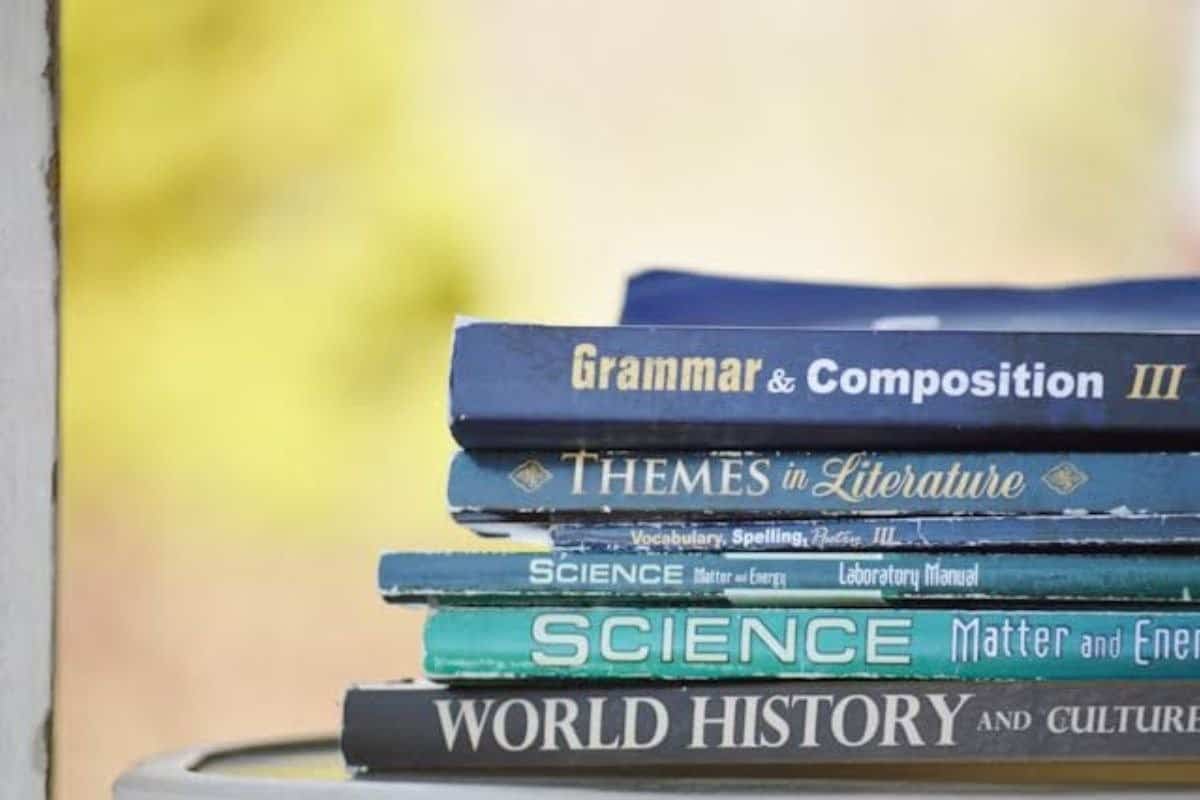When you sit and think about why many sentences flow better and have clarity, you would understand why English grammar has so many rules.
Using adverbs of time is one of the rules of English grammar.
Adverbs of time might appear to be small, but they assist you in having a comprehension of when, how frequently, and how long things take place.
Just take the case of trying to explain something to someone without using adverbs of time; you will simply sound robotic, and you will confuse your listener.
This article will help you understand when and how to use adverbs of time. Just read on.
Key Takeaways
- Adverbs of time inform us about when, how often, or how long
- They may appear in the beginning, middle, or end of sentences
- The position of an adverb can influence pitch or stress
- Adverbs of time are used to modify verbs
What Are Adverbs of Time?
An adverb of time is a word or a phrase that provides information regarding the time of an event or the duration of an event, or the frequency of an event.
It also changes a verb, an adjective, or other adverbs.
An adverb of time can be regarded as a timekeeper that gives information about when something is going to happen or is happening.


Never Worry About AI Detecting Your Texts Again. Undetectable AI Can Help You:
- Make your AI assisted writing appear human-like.
- Bypass all major AI detection tools with just one click.
- Use AI safely and confidently in school and work.
It is a good way to tell when, how often, or how long an action or event happened.
By saying “I will call you tomorrow” or “John always arrives early,” you are given context as to time.
The best part about adverbs of time is their versatility. Adverbs of time perform many functions.
They tell us about specific, ongoing durations or repeated patterns. These adverbs help you understand the timing of various events.
The Adverbs of time also affect or classify the meanings of turns of phrases by telling us when things are happening.
So, with an adverb of time, you can make sense of when, how frequently, and also how long an event has occurred.
What Adverbs of Time Modify
An interesting fact about adverbs of time is that they can modify different parts of your sentence depending on where you place them.
It can even modify an entire clause or other adverbs.
Here are what adverbs of time modify:
Verbs
Adverbs of time are more popular for modifying verbs. Verbs are like the main gig for adverbs of time.
They pair well with action verbs.
- “I recently moved to a new apartment.” ‘Recently’ modifies the verb ‘moved’
- “We will definitely meet soon.” The use of ‘definitely’ here modifies ‘meet’
- “They arrived late yesterday.” Here, ‘Late’ and ‘yesterday’ both modify ‘arrived.’
Entire sentences
In most cases, adverbs of time establish the scenario of what comes after. I.e., it may appear at the start of a sentence and govern the remainder of the sentence. For instance:
- “Yesterday, the whole family went to the beach.”
- “Finally, we got a break.” “Finally” modifies the whole sentence.
Other adverbs
Adverbs of time can also modify other adverbs.
- “She arrived quite early.” ‘Quite’ here modifies the adverb ‘early’
- “He speaks very slowly.” ‘Very modifies ‘slowly’
How They Answer “When?”, “How Often?”, “How Long?”

Adverbs of time can be defined as a response to questions of time. As the name implies, adverbs of time indicate time.
They make you know when, how often, and how long.
Here is how adverbs of time answer when, how often, and how long:
When?
Time adverbs inform us of the time of an action or when an action is going to take place. They are usually placed at the end of the sentence. For instance:
- “I’m leaving now.“
- “The concert starts at 8 pm tonight.“
- “We met yesterday.“
The adverb of time is not supposed to be placed at the end of the sentence to make sense. It may be neutral. These adverbs can be placed in different positions to give emphasis.
Here are some adverb of time examples:
- Now, I am leaving
- The concert tonight starts at 8 pm
- Yesterday we met
It can be put in the initial position of the sentence in order to give emphasis to the time factor. In formal writing, some adverbs may be used before the main verb.
You are to remember that not every adverb can be put at the beginning of the main verb.
For instance:
- We yesterday met
How Often?
Adverbs that answer how often tell us how frequently an action or event happens. You will most likely find them before the main verb but after auxiliary verbs such as have, may, must, and be.
Here are some examples:
- “I usually drink coffee in the morning.”
- “She must always complain about everything.”
- “He rarely shows up.”
In most cases, adverbs that tell how often are placed at the beginning or the end of sentences. However, the placement affects the strength of the sentence.
Examples of these adverbs include:
- Frequently: “I frequently eat Apples” or “I eat Apples frequently”
- Sometimes: “I get cold feet sometimes” or “Sometimes I get cold feet”
- Normally: “Normally, I stay up late” or “I stay up late Normally”
How Long?
Adverbs that inform us as to the length of time are normally placed at the end of the sentence.
These are some examples:
- “I have been waiting forever.”
- “The meeting lasted briefly.”
- “We talked all night.”
You should take note of sentences that have ‘for’ or ‘since.’ ‘For’ is always followed by an expression of duration, while since is followed by an expression of a point in time.
For instance:
- “She only stayed in my house for a year.”
- “I have known her since 2020.”
- “Luke was missing for three days.”
Confused about how specific adverbs function in time-related contexts?
You can use the Undetectable AI’s Ask AI tool. Our tool helps you understand adverbs of time and answer questions about their usage.

Common Types of Adverbs of Time
Adverbs of time have categories. They can be categorized into those indicating a specific time, a duration, or a frequency.
Here are examples of the types of adverbs of time:
Single-Point in Time: Today, Tomorrow, Yesterday
These adverbs point to a specific moment or point in time. You can refer to them as adverbs of definite time.
Examples include:
- Now
- Then
- Soon
- Today
- Yesterday
- Tomorrow
- Finally
Here are some examples in a sentence:
- “I have a dentist appointment today.”
- “Finally, we are going hiking.”
- “Yesterday felt like the longest day ever.”
- “I will finish this project tonight.”
Duration: All Day, For Hours, Since Morning
Duration adverbs inform us about the time a certain thing takes.
They include words like:
- For a while
- All the time
- All day
- Since
- Throughout
Sentences like the following allow you to know how long an action occurred for:
- “I have been working all day on this report.”
- “She waited for a while at the airport.”
- “We have been friends since childhood.”
- “The rain continued throughout the evening.”
- “I have not eaten any food since morning.”
Frequency: Always, Often, Never, Rarely
These adverbs let us know how often something happens. You can also call them adverbs of indefinite time.
Examples include:
- Always
- Often
- Sometimes
- Rarely
- Never
- Daily
- Weekly
- Monthly
- Yearly
Examples of sentences that adverb that indicates Frequency include:
- “I always forget where I put my keys.”
- “We often go to that restaurant.”
- “She never misses her morning run.”
- “I rarely watch TV anymore.”
- “Christmas is a yearly holiday.”
Sequence and Order: Then, Next, Finally
These adverbs show the order of events. You can use adverbs that indicate sequence for storytelling to show the progression of your story.
Examples of Adverbs that show sequence and order include:
- “First, we went to the store, then we headed home.”
- “Next, add the flour to the mixture.”
- “Finally, the mystery was solved.”
- “Afterward, everyone felt much better.”
- “My brother initially resisted the idea, but eventually came around.”
- “Meanwhile, the rest of the team continued working.”
How to Use Adverbs of Time in Sentences
The use of adverbs in sentences is important. In the case of adverbs, the tone and stress of a statement change with the placement of adverbs.
The adverbs of time may be used to the best of their ability when they are positioned at the end of the sentences. Nevertheless, you may change position to stress a part of a sentence.
Here is how to use adverbs of time in sentences:
Position in Sentences: Beginning, Middle, End
Adverbs may be used at the beginning, at the middle, or at the end of sentences, according to the tone you want your sentence to take.
Placing adverbs at the beginning creates emphasis on the timing. For example
- “Yesterday, I went to the store.”
- “Recently, I have been thinking about career changes.”
- “Tomorrow, we’ll discuss the project details.”
When you place your adverbs in the middle of the sentence, it improves your sentence flow. It is effective with the frequency adverbs.
Ensure that you put them between the subject and the verb or the first auxiliary verb.
For example:
- “I have recently started learning Spanish.”
- “She will probably arrive soon.”
- “I always eat breakfast.”
Adverbs of time can also be placed at the end. This method is the most popular. It improves your sentence flow and allows it to feel more conversational. For example:
- “Let’s meet for coffee tomorrow.”
- “I’ve been busy lately.”
- “I went to the store yesterday.”
- “We’ll finish the project soon.”
Emphasis and Stylistic Flexibility
Re-positioning your adverb of time is equivalent to changing the light in a room. It shifts the entire tone and feel of what you are saying.
Let’s look at these statements:
- “I always eat breakfast.” This is just a neutral statement
- “Always, I eat breakfast.” Now, placing the adverb at the beginning of the statement emphasizes the consistency of eating breakfast.
Changing Placement for Tone or Flow
Changing where you place your adverb can change the tone and flow of any sentence.
Like this:
- “Eventually, we found the solution.” This statement kind of builds anticipation
- “We eventually found the solution.” With this placement, you are stating a matter of fact.
- “We found the solution eventually.” This statement emphasizes the time it took.
To prevent thinking long and hard about adverb placement, the key is to place the adverb where it sounds natural.
However, you must also maintain clarity about what action or state your adverb is modifying.
Another easy way is to use the Undetectable AI’s AI Grammar Checker to check. Our tool ensures that you place your adverbs correctly.
It also makes sure that your sentences have clarity and better flow.

Examples of Adverbs of Time in Real Sentences
Here are examples of Adverbs of time in real sentences:
- “I have a meeting with my boss today.”
- “We are leaving tomorrow morning.”
- “Yesterday’s meeting was more productive than expected.”
- I have been studying all night.”
- “She worked late into the night.”
- “They occasionally go out for dinner.”
Adverbs of time are not limited to phrases alone. There are adverb clauses of time. Here are some adverb clause of time examples:
- When I finish this project, I will take a vacation.”
- “Before you leave, please turn off the lights.”
Adverb clauses of time start with words like when, before, after, while, since, until, and as soon as.
They can also come at the beginning or end of your sentence.
Adverbs of Time vs Adverbs of Frequency
Adverbs of frequency are a type of adverb of time. They also modify verbs.
Nevertheless, they have various functions and respond to various questions concerning the time of an action occurrence.
Time adverbs inform us about the time of an action. Frequency adverbs inform us about the frequency of actions occurrence.
While they perform similar functions, not all adverbs of time describe frequency. It is also easy to get confused about the use of adverbs of frequency.
How to Distinguish Between the Two
Here is how to distinguish between adverbs of time and adverbs of frequency:
| Adverbs of Time | Adverbs of Frequency |
| It answers ‘when’ or ‘how long’ | It answers ‘how often’ |
| It includes specific references | It focuses on repetition or regularity |
| Examples include: TodayYesterday Tonight Recently | Examples include:AlwaysNeverSometimesRarely |
Examples That Cause Confusion
Certain adverbs of time may be mistaken for frequency and vice versa. They include:
- “Recently“: It tells us when something happened (in the near past), not how often.
- “Usually“: This is clearly a frequency. It talks about how often something happens.
- “Soon“: This is time, not frequency, because it tells us when and not how often.
- “Always” – This is frequency because it tells us that something happens, and it happens very often.
Confidently publish content that sounds authentically human—start below.
Final Thoughts
Though adverbs are seemingly a small part of a sentence, they make your writing and speech understandable. You must therefore learn how and when adverbs are used in sentences.
There is actually no single right way to use adverbs of time.
All you have to know is what is natural and what works for your sentence. The proper adverbs will make your communication more interesting and easier to follow when telling a story or chatting with your friends.
Now that you know what adverbs of time are, I am sure the next time someone says, “Is recently an adverb of time?” you can respond with a firm “yes” and even explain how its placement can affect the tone of the sentence.
You can also use the Undetectable Ask AI and Grammar Checker tool to ensure that you are using your adverb of time properly.
Level up your grammar with Undetectable AI, give it a try now.
